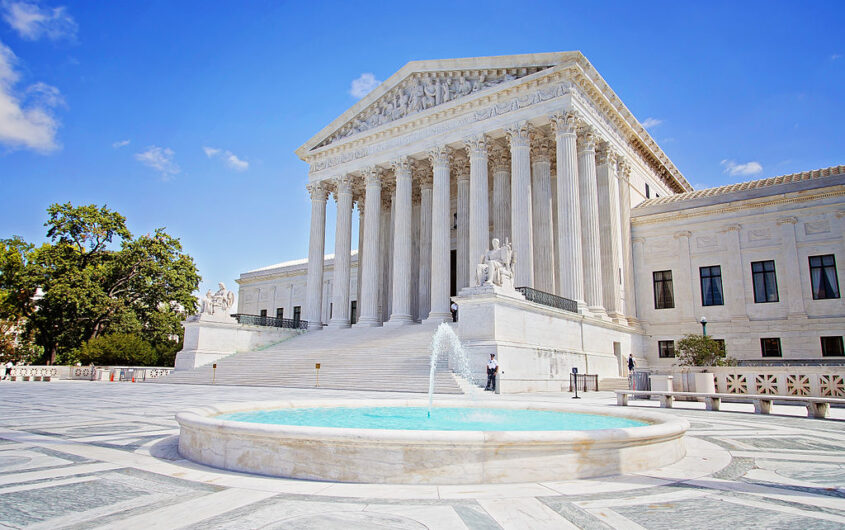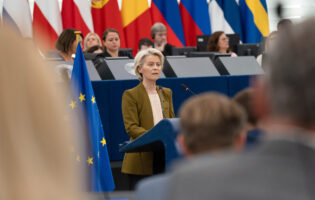
Sunira Moses via Wikimedia Commons
The Supreme Court and the Global Trading System

Peter S. Rashish
Vice President; Director, Geoeconomics Program
Peter S. Rashish, who counts over 30 years of experience counseling corporations, think tanks, foundations, and international organizations on transatlantic trade and economic strategy, is Vice President and Director of the Geoeconomics Program at AICGS. He also writes The Wider Atlantic blog.
Mr. Rashish has served as Vice President for Europe and Eurasia at the U.S. Chamber of Commerce, where he spearheaded the Chamber’s advocacy ahead of the launch of the Transatlantic Trade and Investment Partnership. Previously, Mr. Rashish was a Senior Advisor for Europe at McLarty Associates, Executive Vice President of the European Institute, and a staff member and consultant at the International Energy Agency, the World Bank, UN Trade and Development, the Atlantic Council, the Bertelsmann Foundation, and the German Marshall Fund.
Mr. Rashish has testified before the House Financial Services Subcommittee on International Monetary Policy and Trade and the House Foreign Affairs Subcommittee on Europe and Eurasia and has advised three U.S. presidential campaigns. He has been a featured speaker at the Munich Security Conference, the Aspen Ideas Festival, and the European Forum Alpbach and is a member of the Board of Directors of the Jean Monnet Institute in Paris and a Senior Advisor to the European Policy Centre in Brussels. His commentaries have been published in The New York Times, the Financial Times, The Wall Street Journal, Foreign Policy, and The National Interest, and he has appeared on PBS, CNBC, CNN, NPR, and the BBC.
He earned a BA from Harvard College and an MPhil in international relations from Oxford University. He speaks French, German, Italian, and Spanish.
This week the Supreme Court is hearing oral arguments in a case brought by five small businesses (V.O.S. Selections, Inc. v. Trump) challenging the president’s authority to use the 1977 International Emergency Economic Powers Act (IEEPA) to impose the April 2 “Reciprocal Tariffs” on U.S. trading partners. Two lower courts have already ruled against the White House. A Supreme Court decision in the president’s favor would reinforce the status quo in U.S. trade policy, including the August 21 U.S.-EU deal setting a 15 percent tariff rate for most EU exports to the United States. But it could also put the ongoing shift towards a trading system driven by economic security into overdrive—where, perhaps ironically, a further increase in U.S. presidential power may not lead to a result that serves the U.S. national interest.
There are two broad legal issues at stake in this case. First, there is the question of whether IEEPA’s language granting the president the right to “regulate” imports applies to tariffs. Until now, in the over 75 instances when the executive has relied on IEEPA, not once have tariffs been involved. A second issue relates to the argument the Trump administration has made to justify the tariffs, namely that the U.S. trade deficit (which has been a constant for over 50 years) constitutes an “unusual and extraordinary threat” under the 1977 law.
There is additionally the matter of the balance between legislative and executive power. The U.S. Constitution gives Congress the right to “regulate commerce with foreign nations.” While successive U.S. trade laws have extended presidential powers in trade policy—for example, Section 232 of the Trade Expansion Act of 1962 and Section 301 of the Trade Act of 1974—they all require a more formal process of investigation or are more time-limited than IEEPA. A ruling for the U.S. administration would tip the current balance in the clear favor of the executive.
If the Supreme Court rules in favor of the Trump administration on IEEPA, it will make the United States less reliable as a strategic economic partner—whoever the president is at the time.
But there is also an important question of global economic strategy in play in this case. It has been clear for at least ten years that the multilateral trading system under the aegis of the World Trade Organization (WTO) needs to be updated to account for energy and climate challenges, China’s manufacturing overcapacity, supply chain vulnerabilities, commerce in artificial intelligence, and the role of national security in trade policy. It is even likely that if such a reform occurs, it will include the creation of new agreements and institutions that are focused on a single issue and led by groups of like-minded countries in contrast to the broad-based and universal approach that characterizes the WTO.
In such a world, it would not be a bad thing for a future U.S. administration to be able to conclude deals flexibly and quickly. That also holds true for the European Union, whose ability to be a geoeconomic power is hampered by the division of competences between the European Commission and the EU member states. But because it is difficult to envision a case where even an economic superpower like the United States acting alone would improve its economic security in a durable way, it will be crucial to build alliances with close trading partners like the European Union, Japan, Canada, Mexico, and others. To do that, the United States and those partners will need predictability from each other.
If the Supreme Court rules in favor of the Trump administration on IEEPA, it will make the United States less reliable as a strategic economic partner—whoever the president is at the time. In the long run, the greater U.S. national interest lies in constructing a new global trading system that advances its prosperity and security in concert with close allies, not in enlarging the emergency trade powers of the U.S. executive.








